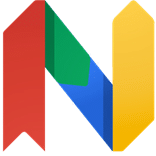Google’s cross platform PlayN game library has just released version 1.4. PlayN enables you to target desktop, iOS, Android, HTML5 and Flash using a single Java code base.
Details of this release:
PlayN 1.4 highlights:
– You can now find out when your Android or iOS game is paused and
resumed via PlayN.LifecycleListener.– WebSocket support has been added (only works on HTML and Java
backends right now).– Custom GLSL shaders are now supported on all GL-based backends
(HTML5/WebGL, iOS, Android, Java).– You can use JavaPlatform for your unit tests without having to wire
up the LWJGL native libraries: use JavaPlatform.registerHeadless.TriplePlay 1.4 highlights:
– Page turn and (iOS-style) flip transitions that use custom shaders
to achieve real 3D perspective (check out the demo on a WebGL-capable
browser: http://threerings.github.com/tripleplay/widgetdemo.html).– The long awaited particle system has arrived, break out the
fireworks. This currently only works on GL-based backends, but may
some day work on non-GL backends (less performantly).– There are a couple of not-yet-finished cool new things:
- a mechanism for syncing persistent storage across multiple clients
with conflict resolution (so people can play your games on all their
devices with the same save game state)- a player for our Flash animation exporter
(https://github.com/threerings/flump), so you can export animations
from the Flash authoring tool and use them in PlayN games
Full release notes available here.
I have created a number of getting started guides for PlayN, start here for Eclipse and right here for Netbeans. Of course, be sure to update the version number in either guide. Once you get through the install process, it’s a very nice library to work with.
News

